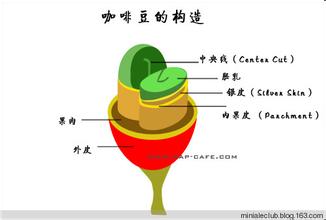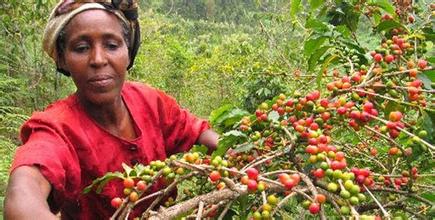Introduction to the grinding scale of the taste treatment method for the description of manor flavor in the coffee bean producing area of Colombia
Introduction to the grinding scale of the taste treatment method for the description of manor flavor in the coffee bean producing area of Colombia
Colombian coffee is located in the Andes, where the mild climate, humid air and good rainfall make it very suitable for coffee growth. according to its geographical location, Colombian coffee is divided into three producing areas: northern, central and southern, in which there are six high-quality coffee producing areas in Colombia, Sierra Nevada,Santander, Cauca, Huila,Nari ñ o and Paisaje cultural cafetero.
The northern Sierra Nevada producing area is one of the high quality producing areas in Colombia, and the Santa Marta Snow Mountains is one of the few snowy mountains on the equator, and its caffeine is famous for its distinctive characteristics and high quality standards. The unique climate, abundant precipitation, cloud cover and shade planting make the coffee here full-bodied and nutty, giving people a unique sensory experience.
The north-central Santander producing area consists of two major geographical areas: the Magdalena Basin and the mountains of the eastern mountains. The Magdalena basin is relatively flat, with a dry and hot climate in the central plain.
Brazil also has a "Rio" bean, exported by Rio de Janeiro, which is also famous, but it is named not because it tastes good, but because it tastes strange. It has a strong smell of iodine, which coffee experts particularly call "Rio"; another dishonorable word related to Rio beans is used to describe a somewhat irritating taste, called "Rioy," caused by coffee berries dried on trees that continue to ferment during drying and are often found in dried Rio beans. Although its output ranking is lower than that of Brazil, the coffee beans are of good quality, rich and unique aroma, sweet in acidity and moderate bitterness, which is very suitable for single drink or mixture. Colombian beans and Brazilian beans are the best choice of basic beans for blended coffee, but their flavor is more mellow and more fragrant than Brazilian beans. In addition to individual taste, they are also often used to blend coffee to increase the sweetness of coffee and to blend the bitterness of other coffee.
Central Colombia is divided into valleys by three north-south longitudinal mountains, of which the central and eastern mountains are the main coffee producing areas. The coffee here is named after a distributed market, with Medellin, Armenia and Manizales in the Central Mountains and Bogota and Bucaramanga in the eastern mountains.
The best Colombian beans, similar to Costa rica or Hawaiian Cona beans, are non-extreme coffee, rich in texture, but not as strong as Sumatra; rich in aroma, but not as good as the best Jamaican alpine flavor; sour, but not as sour as Antigua acid. It often has a caramel-like taste, similar to the aroma of pudding, lack of sour fruit, reminiscent of milk pancakes; it is also suitable for blending mixed coffee. Since the 1970s, with the full promotion of the Colombian government, many old trees have been replaced by new species with high yields, but critics believe that the new coffee is milder and more common than the old ones, and its quality is much lower than it used to be.

Important Notice :
前街咖啡 FrontStreet Coffee has moved to new addredd:
FrontStreet Coffee Address: 315,Donghua East Road,GuangZhou
Tel:020 38364473
- Prev

Description of flavor of Costa Rican black honey coffee beans introduction of varieties produced by grinding scale taste treatment
Costa Rican Black Honey Coffee Bean Flavor description, Grinding scale, Taste treatment, French Variety introduction Costa Rica in order to strengthen the export of high-quality coffee to Europe, the United States, Japan and other countries. Just began to vigorously develop high-quality coffee and increase the added value of coffee exports. At the same time, the government has set up a coffee trust fund to help coffee farmers in need tide over their financial difficulties and cultivate high-quality coffee.
- Next

Colombia Coffee Taste Manor Flavor Description Grind Scale Production Area Variety Introduction
Colombia Coffee Taste Manor Features Flavor Description Grinding Scale Production Area Variety Introduction Colombia coffee has a bitter experience, clear astringency as life, and bitter taste is necessary in life, stop at the end of the tongue is a thorough recollection of the past dust. Looking back on the past will feel more bitter sweet and tender, more want to let the mood a little longer to stop at the beginning of the awakening of knowledge
Related
- Detailed explanation of Jadeite planting Land in Panamanian Jadeite Manor introduction to the grading system of Jadeite competitive bidding, Red bid, Green bid and Rose Summer
- Story of Coffee planting in Brenka region of Costa Rica Stonehenge Manor anaerobic heavy honey treatment of flavor mouth
- What's on the barrel of Blue Mountain Coffee beans?
- Can American coffee also pull flowers? How to use hot American style to pull out a good-looking pattern?
- Can you make a cold extract with coffee beans? What is the right proportion for cold-extracted coffee formula?
- Indonesian PWN Gold Mandrine Coffee Origin Features Flavor How to Chong? Mandolin coffee is American.
- A brief introduction to the flavor characteristics of Brazilian yellow bourbon coffee beans
- What is the effect of different water quality on the flavor of cold-extracted coffee? What kind of water is best for brewing coffee?
- Why do you think of Rose Summer whenever you mention Panamanian coffee?
- Introduction to the characteristics of authentic blue mountain coffee bean producing areas? What is the CIB Coffee Authority in Jamaica?

